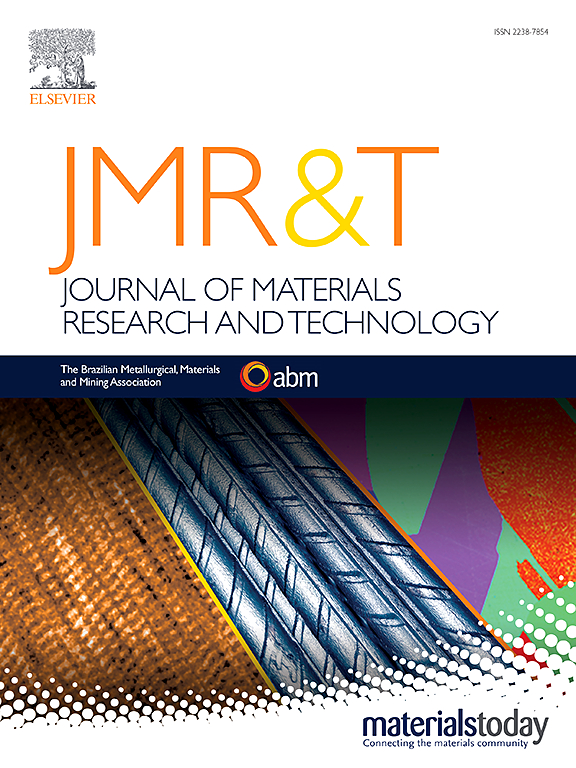Influence of secondary phases and their redistribution by deformation on corrosion behaviour of magnesium alloys – A short review
IF 6.6
2区 材料科学
Q1 MATERIALS SCIENCE, MULTIDISCIPLINARY
Journal of Materials Research and Technology-Jmr&t
Pub Date : 2025-06-04
DOI:10.1016/j.jmrt.2025.06.022
引用次数: 0
Abstract
Conventional deformation processes such as rolling, extrusion and forging or novel severe plastic deformation techniques significantly alter the microstructure, mechanical properties and corrosion behaviour of magnesium (Mg) alloys. Principally, thermomechanical processes applied to Mg give rise to significant alterations in properties such as dislocation density, twinning, residual stresses, texture, grain size and redistribution of secondary phases. Among them, the redistribution of secondary phases can be regarded as one of the most important factors affecting corrosion resistance due to the relatively reactive nature of Mg and its high tendency to form micro-galvanic couplings with secondary phases. Understanding the elaborate relationship of the varying secondary phase distribution before and after deformation processes on the microstructure and corrosion properties is crucial to optimise the performance of Mg alloys in various applications. Therefore, in this review, the effects of deformation-induced redistribution of secondary phases on the dissolution kinetics, surface morphology and formation of protective oxide layers in Mg alloys were discussed. Furthermore, potential challenges and opportunities for the development of new corrosion-resistant Mg alloys were highlighted.
二次相及其变形重分布对镁合金腐蚀行为的影响综述
传统的变形工艺,如轧制、挤压和锻造或新的严重塑性变形技术显著改变了镁合金的微观结构、机械性能和腐蚀行为。主要地,应用于Mg的热机械过程会引起诸如位错密度、孪晶、残余应力、织构、晶粒尺寸和二次相再分布等性能的显著改变。其中,二次相的再分布是影响耐蚀性的最重要因素之一,因为Mg具有相对活泼的性质,容易与二次相形成微电偶联。了解变形前后不同的二次相分布对镁合金显微组织和腐蚀性能的影响,对于优化镁合金在各种应用中的性能至关重要。因此,本文讨论了变形诱导的二次相重分布对镁合金溶解动力学、表面形貌和氧化保护层形成的影响。展望了新型耐蚀镁合金发展面临的挑战和机遇。
本文章由计算机程序翻译,如有差异,请以英文原文为准。
求助全文
约1分钟内获得全文
求助全文
来源期刊

Journal of Materials Research and Technology-Jmr&t
Materials Science-Metals and Alloys
CiteScore
8.80
自引率
9.40%
发文量
1877
审稿时长
35 days
期刊介绍:
The Journal of Materials Research and Technology is a publication of ABM - Brazilian Metallurgical, Materials and Mining Association - and publishes four issues per year also with a free version online (www.jmrt.com.br). The journal provides an international medium for the publication of theoretical and experimental studies related to Metallurgy, Materials and Minerals research and technology. Appropriate submissions to the Journal of Materials Research and Technology should include scientific and/or engineering factors which affect processes and products in the Metallurgy, Materials and Mining areas.
 求助内容:
求助内容: 应助结果提醒方式:
应助结果提醒方式:


